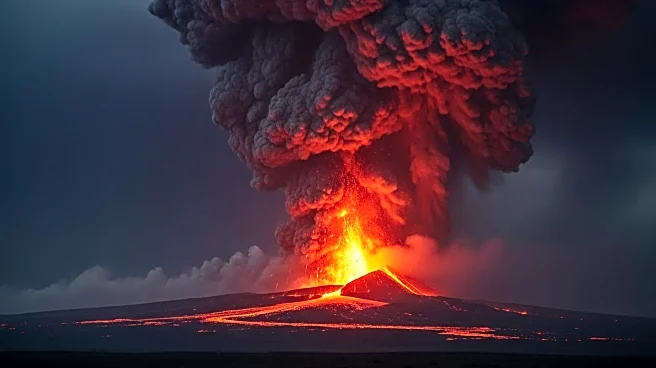What's Happening?
The year 536 CE is identified by some historians as the worst year in human history due to a volcanic eruption in Iceland that led to a 'volcanic winter.' This event caused a significant drop in temperatures, widespread crop failures, and famine across Europe, the Middle East, and parts of Asia. The eruption spewed volcanic particles into the stratosphere, blocking sunlight and leading to climatic disruptions. This period marked the beginning of the Late Antique Little Ice Age, lasting until about 660 CE. The eruption's aftermath included the Justinian plague, which devastated populations in the Byzantine Empire. Despite the catastrophic environmental conditions, some historians argue that contemporary records did not describe the events as catastrophic, suggesting a reevaluation of the historical narrative.
Why It's Important?
Understanding the events of 536 CE provides insights into how natural disasters can shape human history and societal development. The volcanic eruption and subsequent climate changes had far-reaching effects, influencing agricultural productivity, health, and economic conditions. This historical analysis highlights the vulnerability of societies to environmental shocks and the importance of resilience and adaptation. The reinterpretation of 536 CE also reflects modern concerns about climate change and disaster preparedness, emphasizing the need for robust systems to mitigate the impacts of similar events today.
Beyond the Headlines
The fascination with 536 CE underscores the interplay between academic research and public imagination. Modern interpretations of the event have been influenced by contemporary issues such as nuclear fears, asteroid impacts, and climate change. This highlights the evolving nature of historical narratives and the role of scientific evidence in shaping our understanding of the past. The study of volcanic eruptions and their historical impacts also serves as a reminder of the potential risks posed by current volcanic activity and the importance of monitoring and preparedness.

